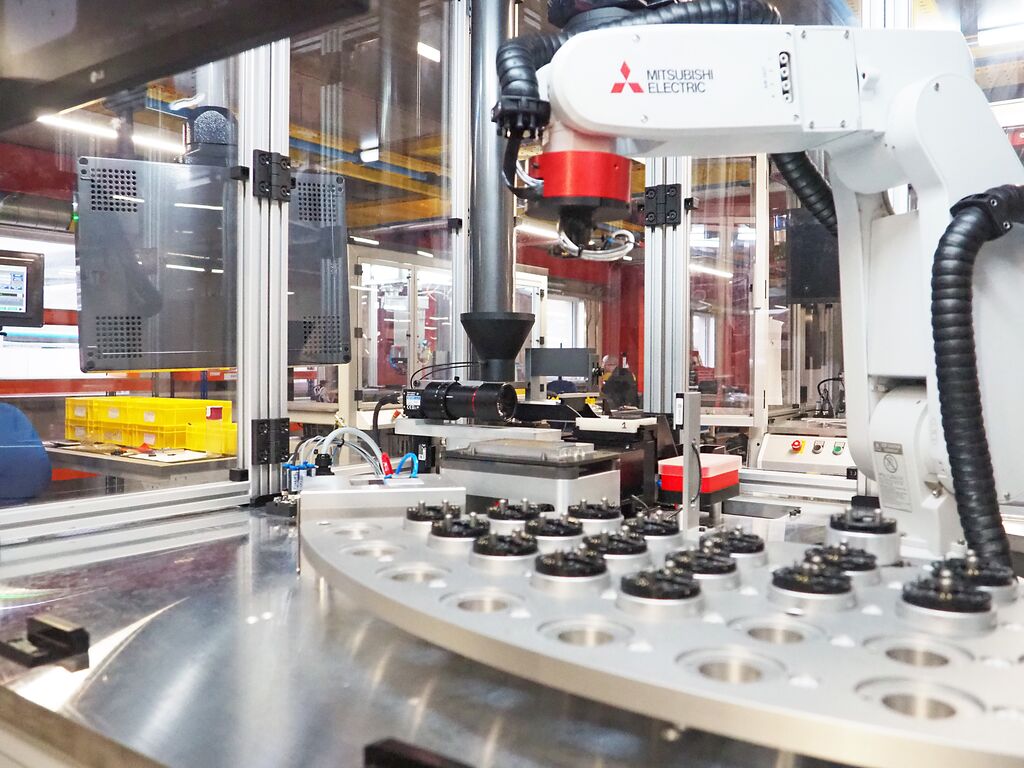Embedded Vision Systems in Action
Cameras and embedded vision systems are common across a wide range of industries, but their use will be more vital than ever as new technologies are adopted. Alongside conventional cameras, technologies such as lidar (light direction and ranging) will be incorporated into embedded vision systems that will measure distance, provide accurate imaging, and object recognition. The potential uses for such powerful systems are almost limitless.
Machine Safety
The automotive industry, with its headline-grabbing developments, represents the most public example of embedded vision systems. The future of autonomous vehicles will depend on technology that can identify potential obstacles and react accordingly. The same technology has enormous potential for machine safety in the industrial world.

As autonomous robots become more common in the factory environment, the need for collision avoidance grows. Embedded vision systems will allow factory robots to identify potential hazards and act in the most appropriate way. This will keep the factory safe whilst maintaining the greatest possible efficiency.
The task of providing safe working areas continues to grow in complexity as businesses adopt Industry 4.0 technology. Also known as the Industrial Internet of Things, this new way of working will result in a more adaptable factory floor, and conventional safety systems will not be flexible enough to cope with the ever-changing environment.
Machines will need to detect possible hazards, but it is also vital for them to understand the nature of the hazard in real time so that the right action can be taken to prevent accidents. It is only with the sophistication of modern embedded vision systems that this has become truly possible.
Quality Control
It is in the world of manufacturing that some of the most interesting applications for embedded vision systems are found. On any production line, one of the key tasks is quality control. The sophistication of modern embedded vision systems allows automated, 100% visual inspection. Each item is imaged by a dedicated camera and its dimensions compared to a standard in real time.
The result is that faulty products are identified immediately and discarded or retained for further analysis. This immediate inspection also provides important data used to understand maintenance needs and even predict future failures.

This use of data is at the heart of the smart factory concept, in which vision systems play a pivotal role. For example, imaging might identify a rising trend in faults from a molding machine, which suggests the need for corrective maintenance.
This information is correlated with other data collected from the same machine, including temperatures and energy consumption. By analyzing all the associated data, machine maintenance is planned before a major failure occurs, which in turn minimizes the disruption to production.
Vision systems will contribute to the rapid response of the smart factory. One of the advantages of the smart factory is its ability to respond rapidly to changing demands, and vision systems play a key role in that flexibility. Cameras can be redeployed in different roles by employing alternative software, making them easy to reconfigure if needed.
Harwin has embraced the latest vision systems in its own manufacturing facility. The manufacture of connectors requires a large number of discrete operations, and using vision systems allows Harwin to monitor each step of the production process. The data collected ensures the quality of the end product, and helps identify maintenance requirements.
Tough Conditions on the Factory Floor
The factory floor is a tough environment for sophisticated cameras, however. Installing vision systems into industrial settings needs careful consideration. Connectors are one of the few products that must bear the brunt of tough factory conditions, while the latest high-definition cameras demand connectors that can handle the high data rates that they generate.
Many camera systems require the use of coaxial cables, while other embedded vision systems require high-speed data channels. The connectors required to provide power, data and signal must be highly capable.
The challenges of using vision systems in harsh environments are being experienced in new industries. The use of cameras in such applications as smart agriculture, unmanned aerial vehicles and the automotive industry will see an increased need for high performance connectors that can deliver reliability in demanding conditions.
Connector Solutions for Vision Systems
Harwin connectors, with their combination of compact design, high performance and proven track record in a wide range of industries, are ideal for the latest camera systems.
The Datamate Mix-Tek series features a hybrid design that can combine data and power connections, including coaxial contacts, whilst providing superior reliability in harsh environments.
Archer Kontrol connectors provide ultimate board stacking flexibility and durable performance for an industrial setting. The polarized & shrouded design provides protection against twisted and angled mating during maintenance and upgrade.
Embedded vision systems have found uses in a wide range of applications that can take advantage of their small size and high definition. Their ease of use makes them an increasingly effective solution even in the harsh conditions of the smart factory and beyond.
Vision systems require connectors that deliver the same compact size and high performance. Let Harwin be your partner for the next generation of embedded vision solutions.
Not sure of the right product?
If you would like to talk to someone about which product would be the right fit for your requirements, contact one of our Experts for assistance.
Uh oh, it looks like you are using an outdated browser version.
Some functions may not work as expected on Harwin.com in your current browser. For the best experience, more security and speed, we recommend updating your browser to the latest version.
(if you are using Internet Explorer, we recommend switching to an alternative browser.)
Still having issue? Contact [email protected] for help.



